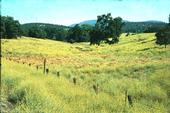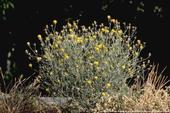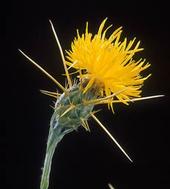- Author: Jeannette E. Warnert

The USDA has announced it will allow the release of a weevil (Ceratapion basicorne) in the United States to help control yellow starthistle, an invasive weed found in 40 of the lower 48 states, reported Capital Public Radio. The weevils will initially be released in California.
Ceratapion basicorne is native to Eurasia, the same area where yellow starthistle originated. Yellow starthistle is thought to have been introduced into California from Chile during the Gold Rush. The weed readily took hold in California valleys and foothills, thriving in areas where the soil has been disturbed by animals grazing, road construction and wildland firebreaks....
- Author: Jeannette E. Warnert

The Star Thistle Leading Edge Project, a collaborative effort involving state and federal agencies and UC Cooperative Extension, is facing a lack of funding, reported Matt Weiser in the Sacramento Bee.
The project was funded by the state Department of Food and Agriculture as part of its weed control budget totaling $2.7 million in 2011. That money was cut from the 2011-2012 state budget cycle. Local and federal grants that kept the program going will run out next month. A $314,000 grant from the Sierra Nevada Conservancy was denied because the group failed to meet the application requirements, the article said.
- Author: Jeannette E. Warnert

Reporter Carol Brodsky of the Ukiah Daily Journal suggests most readers are familiar with yellow starthistle, a noxious weed thought to have been introduced from Chile more than 100 years ago. Though yellow starthistle is controlled by a variety of insects and competitive weeds in its natural habitat, in California people are its primary enemy.
And yellow starthistle is a formidable foe. It can grow six feet tall and as much around. The flowers are beautiful, but surrounded by sharp, one-inch-long spikes.
John Harper, the UC Cooperative Extension livestock and natural resources advisor in Mendocino County, told the reporter that the plant has features...



